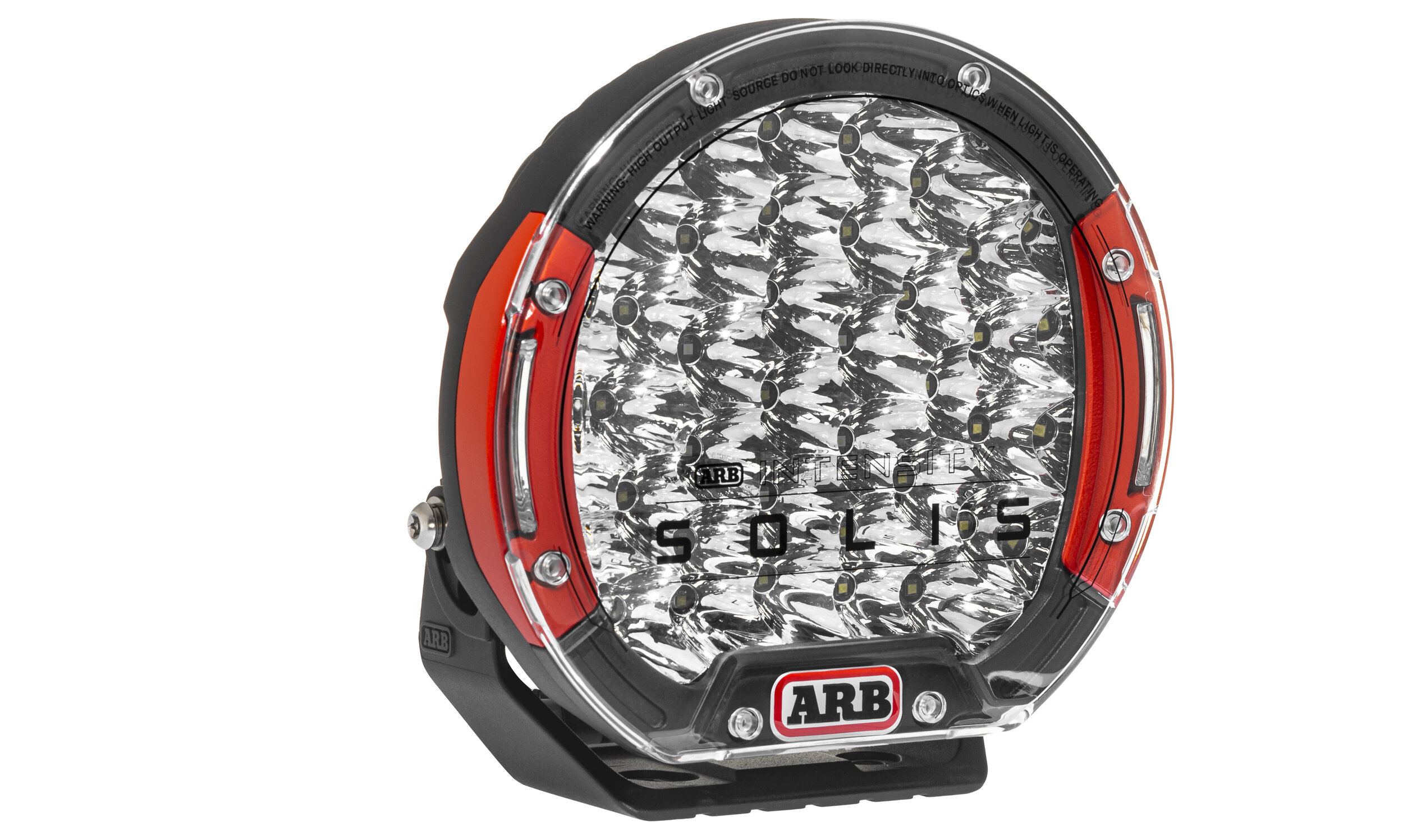ARB Solis driving lamps
I’ve written before about my admiration for ARB’s Intensity driving lamps. We have a set on both our Troopy and the FJ40, which have saved us from, respectively, kangaroo and cow strikes on remote roads on two continents.
The lamps on the Troopy are first-generation Intensity lamps, and I would have considered it difficult to improve on them, but in 2019 ARB introduced a V2 version with 35 percent more power. I put those on the FJ40, and indeed they are noticeably (even) brighter.
But now, just a year later, ARB has introduced an entirely new lamp, the Solis.
At first glance the Solis looks like another update of the existing, larger Intensity V2 AR32 (the Solis at present only comes in the larger size; there’s as yet no equivalent to the smaller V2 AR21). But there are actually quite a few design modifications, one major difference—and one huge difference.
The 32 in the V2 Intensity name refers to the number of Osram LED emitters in the lamp. The Solis ups this to 36, and, moreover, splits their duties. There are 30 4-watt emitters in the perimeter of the lamp, and 6 10-watt emitters in the center, to give some extra reach in the center of the beam, even in the flood-patterned model. As a result, the performance of both the spot and flood model of the Solis exceeds the V2 AR32 Intensity by about 20 percent.
The major difference is that the Solis is dimmable over a five-stop range, via a remote-control wand. On the surface it might seem pointless to build a 165-watt Osram-powered driving lamp and then make it dimmable, but in fact there are many situations in which you want more light than your high beams can provide, but less than the Solis’s full 9,500 effective lumens. On winding roads lined by trees, for example, the glare from full-powered lamps can be a hindrance. The reflection from road signs can also be nearly blinding at times. If there’s a lot of dust or moisture in the air you might be better off with less reach.
Remote controls the five-step dimming function
And the huge difference? That’s the price. The V2 AR32 Intensity lamps retail for $783 each. The Solis lamp of the same size retails for $558. Per pair. With a wiring loom.
What explains this? You might have already guessed. The Intensity V2 lamps are manufactured in the United States by Rigid Industries. The Solis was engineered in Melbourne, Australia, and is manufactured in China.
I’m a bit conflicted about this, but not much. Sure, I’d prefer the U.S.-manufactured items and I’m glad those are the ones we have. But I’m fully aware that not everyone can spare that kind of change for driving lamps, and those people are prime targets for the many knock-off lamps that replicate the look of the Intensity lamps without their build quality. The combination of Chinese manufacturing . . . let’s call it “efficiency” . . . with, one fully expects, ARB quality control, should provide a reliable alternative for those who fainted when they read that first price above.
Are there any other cost-cutting approaches? Not that I can see from photos or specifications. The Solis has a cast-aluminum body, a one-piece reflector, a polycarbonate lens, and is submersible to three meters. It echoes a bit of the Intensity look with two red trim sections, but these can be swapped out for black if you prefer a more low-profile appearance.
My hope is that both these lines survive. I’m happy they’re both there, but I’ll be disappointed if sales of the U.S.-made product simply disappear in the face of the in-house Chinese competition.
I’m hoping to get a pair of Solis lamps to actually test soon. In the meantime, ARB is here.




